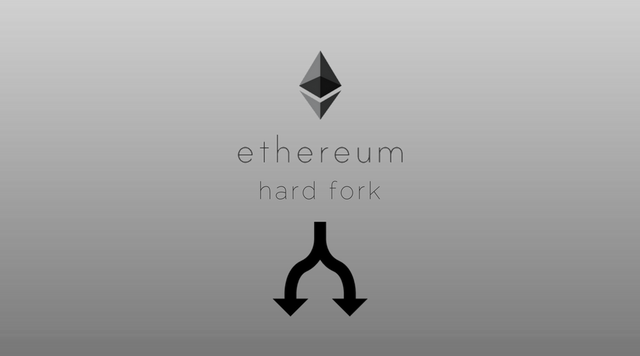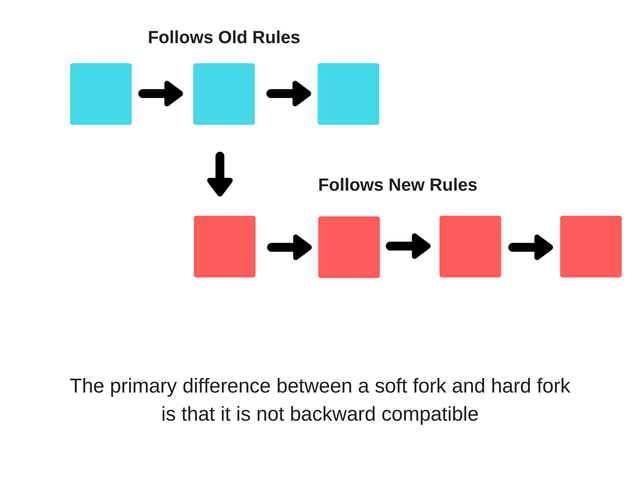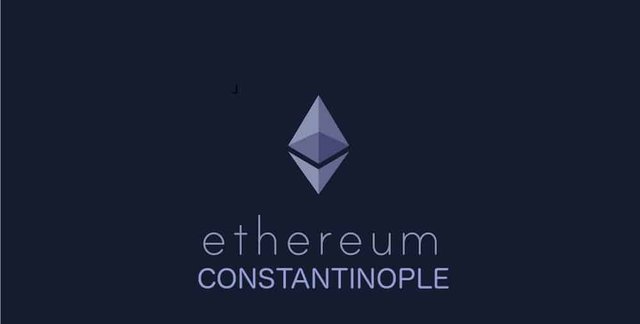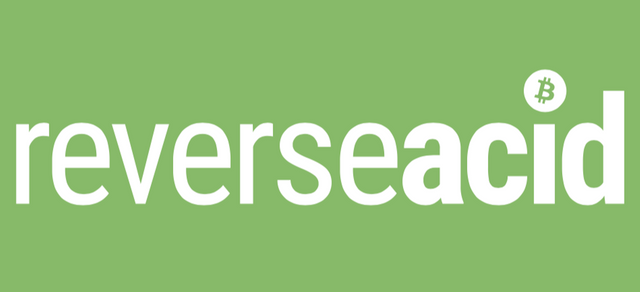Hard Forks

A hard fork is a non-backwards compatible upgrade to an existing blockchain, meaning that all the network nodes on the Ethereum blockchain must either comply with the fork and update their protocol softwares, or continue with he same outdated protocol by forming another separate Blockchain entity. Some of the most famous hard forks are the Bitcoin vs. Bitcoin Cash hard forks, Ethereum vs. Ethereum Classic hard fork etc. What sets Constantinople or Byzantium of other hard forks apart is that theses are internally developed by the network and implemented with the complete consensus of all members and contributors. Therefore, in the case that a portion of users don’t agree with the change, this may result in two different versions of the same blockchain running concurrently.

As the Constantinople hard fork is just a few days away, it is understandable to have a look at the previous hurdles that Ethereum has crossed and reached. To look back, here is a brief summary of the Ethereum hard fork timeline since 2015, covering all the major updates it has brought upon itself, and finally looking at what the future holds for the foundation.
0. Olympic - May 2015
Also known as Frontier pre-release or Ethereum 0.9, Olympic was the last of the prototype tests carried on by the founding team. It was the first and last public test net before finally releasing Frontier. A bounty of about 25,000 ether was rewarded for any participant to test the limits of the network during this time. It invited as many network professionals and enthusiasts as possible to discover all the drawbacks that it has.
1. Frontier - 30 July 2015 - Block no. 1
Frontier was the first widespread protocol of the Ethereum network. Its main aim was to cover up all the bugs discovered in the Olympic public test. Frontier started off with only a framework of mining the Ethereum’s currency Ether, how to complete transactions and forming simple smart contracts. A live environment was created by Frontier which allowed participants to test and get familiar with the capabilities of Ethereum. dApps could also be tested here. The Genesis block, mined along with Frontier, contained all the pre-sale transactions and all the transaction of the Ethereum sale to the public. The reward for each block was 5 Ether back then.
Frontier was followed by a small ‘Frontier Thawing’ update that aimed to allow low Gas fees until the network gains momentum.
2. Homestead - 14 March 2016 - Block no. 1,150,000
Homestead, the second protocol update, was considered to be the first stable update since Ethereum’s main net release. Several updates relating to transaction processing, Gas pricing, security, Smart contract implementation, etc., were released. The original plan was to release Homestead within a month of Frontier’s release, but several functionality updates pushed the timeline to almost a year. Homestead release was aimed to be as minimum as possible to allows for later debugging.
3. The DAO Hack - 20 July 2016 - Block no. 1,920,000 (Unscheduled)
Following the hack of the Distributed Autonomous Organization (DAO) in July 2016, during which some $150,000,000 worth of Ether was stolen due to a bug in the DAO source code, Vitalik Buterin along with several other prominent members of the network decided to back roll the blockchain to the block before the DAO started. This move was widely debated by the community, questioning the immutability and decentralization of the Blockchain as a centralized body made the decisions for them. Following this, a community branched of the Ethereum Foundation called the Ethereum Classic community that follows the blockchain after the hack was completed. It was lead by then Ethereum CEO Charles Hoskinson, who later went on to form Cardano. About 85% of the miners chose to follow the changes ledger, leading to a clear majority for the update.
4. Spurious Dragon - 22 November 2016 - Block no. 2,675,000 (Unscheduled)
The second and last (as of yet) of the unscheduled protocol hard forks, Spurious Dragon was released to cope up with the regular DoS attacks faced by the network. As the official Spurious Dragon release note says “The previous hard fork addressed immediate network health issues due to the attacks”. The most important update was the EIP 155 - Replay attack protection, which basically means that changes to the Ethereum ledger must not coincide and/or alter the Ethereum Classic ledger. A later update to the Ethereum Classic ledger solved this problem both ways. A larger contract size of 24567 bytes was also implemented.
5. Metropolis
The Metropolis vision was then sub-divided into two parts, with the first half joining the protocol in 2017 and the next scheduled for mid-2018, but pushed multiple time before finally settling on 16th January 2019.
5A. Byzantium - 16 October 2017 - Block no. 4,370,000
Subset of the Metropolis update, Byzantium was much awaited as it was the first planned network fork in the last year and a half. Several much awaited updates were etched onto the hard fork. The most talked about of the updates was the block reward reduction from 5 Ether per block to 3 Ether, with a further plan of reducing it to 2 Ether in the upcoming updates. RSA Signature verification and implementing zk-SNARKS (EIP 198), Elliptic curve addition and scalar multiplication (EIP 196), changes to the difficulty adjustment formula (EIP 100) are some of the major updates brought in.
5B. Constantinople - 16 January 2019 - Block 7,080,000
Originally planned for mid 2018, Constantinople, the second half of Metropolis, is said to be released in January 2019. Characterized as primarily a “maintenance and optimization upgrade”, Constantinople features small, yet highly technical, ethereum improvements to network efficiency and fee structure, as well as, upgrades that pave the way to ethereum’s hotly anticipated scaling roadmap.

A detailed description of the Constantinople will follow in the coming days.
- SB
Sources:
- Ethereum - Wikipedia
- Ethereum Hard Forks
- What is Ethereum Metropolis: The Ultimate Guide
- Simplifying The Ethereum Roadmap (Byzantium to Constantinople)
- Final Steps
- What is Olympic, Frontier, Morden, Homestead and Ropsten Ethereum blockchain?
- The Ethereum Launch Process
- Byzantium HF Announcement
- Hard Fork no. 4: Spurious Dragon
-----
ReverseAcid Monthly Recap
-----
Crypto Analysis Series
- Part 1 - Basic Attention Token and How It's Revolutionizing the Internet
- Part 2 - Golem Network Token as a Potential Giant Killer
- Part 3 - Augur and the Future of Decentralized Predictions Markets
- Part 4 - Dogecoin - Such Meme, Much Value
- Part 5 - Zilliqa
-----
Previous posts:
- XRP-USD Chart Breakdown: Daily Timeframe
- Governmental Incentives for Implementing Distributed Databases
- Current Scenario of the Global Stock Market: A Detailed View Into Major World Indices
- Giving in to Your Fear: Does the Current Market Warrant this Magnitude of FUD?
- DLT, Blockchain, and Cryptocurrencies: What it all Means for FinTech and More
- Confidence Crisis: HODL on to Your Horses
- Bitcoin Technicals: In Depth Breakdown of the Current Move
- The Scalability Trilemma
- Online Retailer’s Incentives for using cryptocurrencies as a medium of exchange
-----
About Reverse Acid

-----
Be a part of our Discord community to engage in related topic conversation.

-----
Follow our Instagram and Twitter page for timely market updates


Eth hardfork brings some rise in BTC price. Hope it go up like this..
Posted using Partiko Android
Downvoting a post can decrease pending rewards and make it less visible. Common reasons:
Submit
Yes, traditionally that was the case as BTC was the “gateway currency”. People willing to buy Ether usually had to go get BTC and then exchange it to Ether or any other crypto they wished for.
But that’s not necessarily the case right now. We’ve seen a lot of exchanges recently opening Ether based market to exchange it for other Cryptocurrencies. This might be the time when Ether finally breaks off of BTC’s shadow.
Downvoting a post can decrease pending rewards and make it less visible. Common reasons:
Submit
Congratulations @reverseacid! You have completed the following achievement on the Steem blockchain and have been rewarded with new badge(s) :
Click here to view your Board
If you no longer want to receive notifications, reply to this comment with the word
STOPTo support your work, I also upvoted your post!
Do not miss the last post from @steemitboard:
Downvoting a post can decrease pending rewards and make it less visible. Common reasons:
Submit